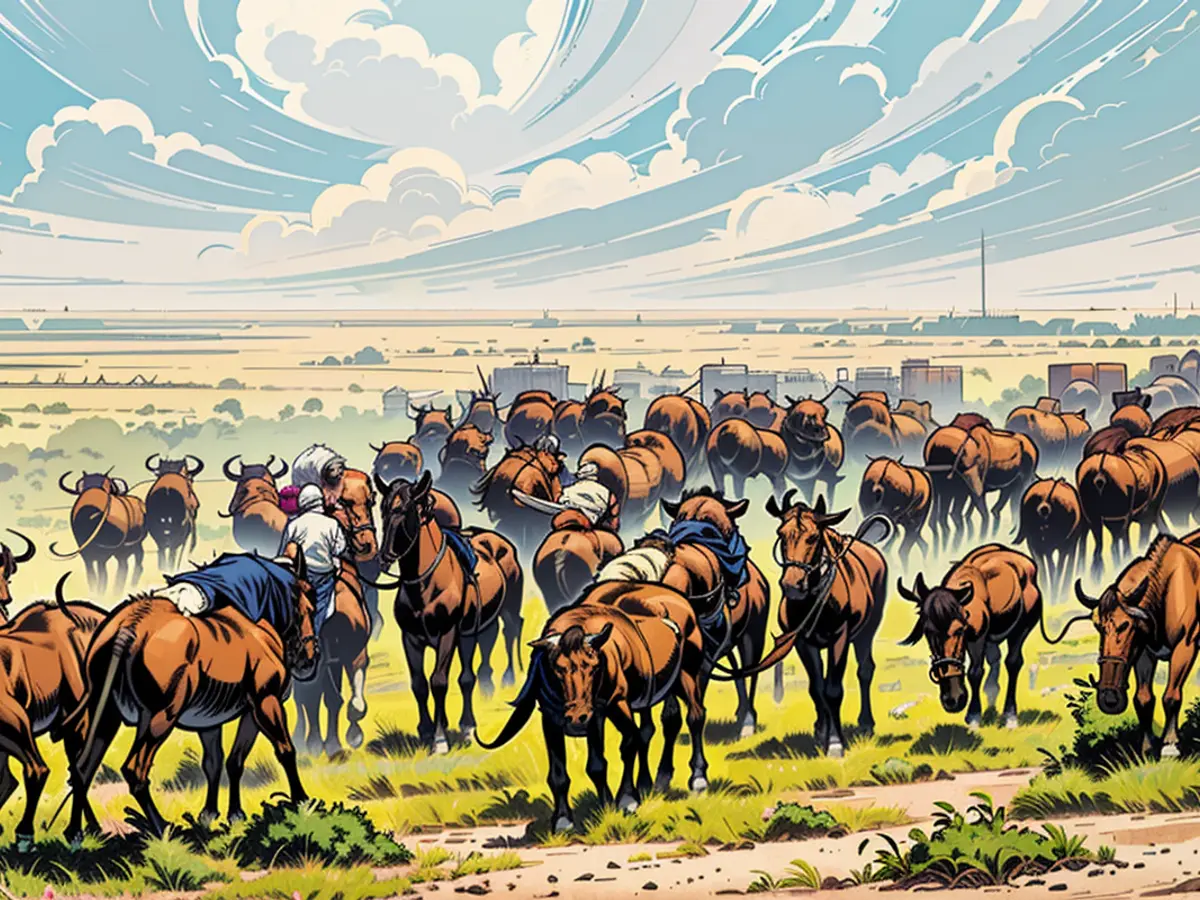- Introduced: Digital Map Showcasing Migratory Animal Herds
The United Nations has unveiled fresh digital charts depicting the migratory patterns of various herbivorous animals globally, with the aim of safeguarding these species. This marks the debut of an interactive map showcasing the migratory routes of animals such as zebras, wildebeest, and antelopes, who cover substantial distances at different times throughout the year, as per the CMS in Bonn, the secretariat of the UN's Biodiversity Treaty.
An ensemble of over 80 scientists scrutinized data to fabricate the "World Atlas of Herbivorous Animal Migration." This atlas will be made accessible to governments, conservation organizations, and the public without charge.
As Amy Fraenkel, CMS Executive Secretary, stated, "To devise effective conservation and management strategies, it's indispensable to comprehend the routes these animals follow during their migrations." The atlas will aid in meticulously planning conservation measures while factoring in the needs of local communities.
Numerous migratory animal species are under threat
From the reindeer in North America to the alpine ibex, Mongolian wild asses, and Argentine guanacos, belonging to the camel family, herbivorous animals worldwide traverse significant distances in search of food, escaping harsh weather conditions, or raising their young. The CMS Secretariat emphasized, "Ensuring their capacity to migrate is essential for their survival."
Recent research released by the United Nations in February revealed that many migratory animal species are in crisis. Nearly 44% of these species are on the decline, and 22% are at risk of extinction, largely due to human activities, including alterations to habitats caused by fences, roads, and railways, disproportionate exploitation due to poaching, and climate change.
Matthew Kauffman, a wildlife biologist from the U.S. Geological Survey (USGS), expressed, "This atlas represents a milestone in global conservation, and we anticipate that these migration maps will serve as an effective and tangible instrument to mitigate the worldwide erosion of herbivorous animal migrations."
Further expansion of maps
The current interactive charts illustrate migrations of 20 animal species, including the Serengeti wildebeest, the African elephant, and the Saiga antelope of the central Asian steppe. Future additions to the atlas include more maps of migration corridors and species yet to be represented.
Grant Hopcraft, conservation ecologist at the University of Glasgow, explained, "We've reached a turning point in ecology where obtaining accurate data to accurately direct conservation efforts that yield maximum impact on migratory wildlife is more necessary than ever."
For instance, the central Asian region is home to the world’s largest intact and connected grasslands. The atlas reveals how railway development hinders the movement of the Saiga antelope and isolates it from crucial winter habitats.
Governments and stakeholders can implement wildlife crossing structures or other protective measures to facilitate herd migrations within a migration specified in the map, according to the researchers.
The 'World Atlas of Herbivorous Animal Migration' was compiled by an international team of over 80 scientists, aiming to enhance our understanding of these animals' migratory patterns, as stated by Amy Fraenkel. The scientific community recognizes that comprehending these migrations is crucial for devising effective conservation strategies for numerous threatened herbivorous species, such as reindeer, alpine ibex, and Mongolian wild asses.







